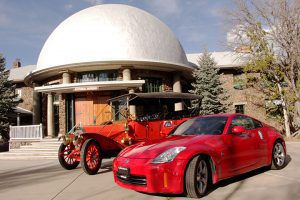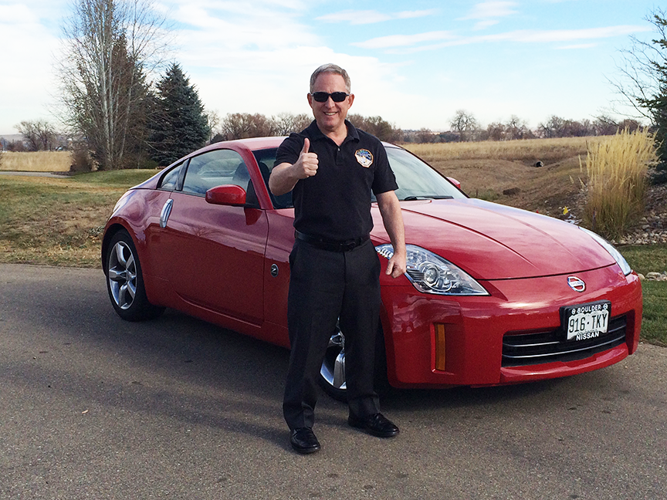Alan Stern’s “other vehicle” — the New Horizons spacecraft — is now way past Pluto, but the sports car he drove down here on Earth for the past 10 years is being auctioned for the benefit of the Lowell Observatory.
Stern, who led the NASA mission to Pluto, donated his cherry-red 2006 Nissan 350Z, complete with a bumper sticker that reads “My other vehicle is on its way to Pluto,” to raise money for Lowell’s astronomical research.
The Flagstaff observatory, with its historic telescopes atop Mars Hill, has remained a private foundation since its establishment in 1894 by Percival Lowell, who wanted to search for signs of life on Mars.
It was Pluto that brought the site its biggest notice. Self-taught astronomer Clyde Tombaugh discovered the planet from Mars Hill in 1930.
Stern, who conceived the NASA mission to the planet, has become one of the observatory’s biggest boosters. He named Pluto’s heart-shaped icy plain, Tombaugh Regio, in honor of Pluto’s discoverer.
Stern’s advocacy and the mission that turned Pluto from a “dot” in the sky into a “real world” reinvigorated interest in the observatory, said Lowell historian Kevin Schindler.
The historic observatory, where visitors can see the telescopes and domes used by Tombaugh to find Pluto and by Lowell to observe Mars, attracted a record 97,000 visitors in 2015 when New Horizons visited Pluto, Schindler said.
Interest hasn’t waned, and he expects the number to top 100,000 this year.
A link to the eBay auction of Stern’s car is at Lowell.edu until Christmas Eve at 11:59 p.m.
Schindler said Stern’s auto is “not quite as fast” as his spacecraft, “but it gets much better gas mileage.”
The Nissan’s top speed is in the 155-mph range. New Horizons left Earth at more than 36,000 mph, setting a NASA record.
The spacecraft, now on its way to two other targets in the Kuiper Belt, has traveled more than 3.5 billion miles. The odometer on the 350Z has a paltry 77,000 miles.





